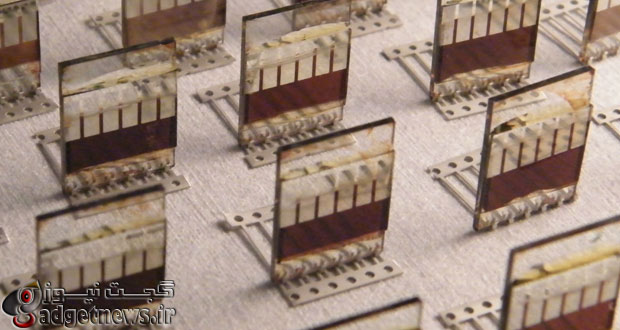دانشمندان دانشگاه شفیلد موفق به تولید اسپری سلول های خورشیدی ارزان قیمتی شده اند که می توانند مانند یک پوشش نازک از رنگ هر سطحی را تبدیل به یک سلول خورشیدی کند .
این سلول ها از نوعی سیلیکون به نام perovskite ساخته شده اند و استفاده از آنها برای تولید سلولهای خورشیدی ارزان قیمت تازه به تصویب رسیده و به دلیل هزینه های پایین تولید در حال کسب محبوبیت است . افشانه ابداعی را میتوان از لحاظ نظری به هر سطحی که سلولها میتوانند به آن بچسند، اعمال کرد اما گفته میشود کارآیی واقعی آن بر سطوح انعطافپذیر یا پارچهها بسیار بیشتر است.
مولفه perovskite عنوانی است که برای توصیف ساختار بلوری معدنی به کار میرود که در نوع معدنی اکسید تیتانیوم کلسیم که خود از کلسیم تیتانات ساخته شده، یافت میشود. این ماده برای نخستین بار در سال 2009 و برای تولید سلولهای خورشیدی به کار رفت اما کارآیی آن پایین و در حد 10 درصد بود که محققان امیدوارند با روش جدید این عدد به 25 درصد برسد .
پروفسور دیوید لیدزی محقق گروه فیزیک نجوم دانشگاه شفیلد گفت :
این یک گام مهم در تولید سلولهای خورشیدی ارزان و کارآمد است ، وی همچنین گفت من باور دارم فن آوری های جدید فیلم نازک فتوولتائیک نقش اساسی را تولید سلول های خورشیدی مبتنی بر perovskite خواهد داشت .
منبع : factor-tech
Ultra-thin spray-on solar cells to bring cheap green energy to the masses
Ultra-thin spray-on solar cells to bring cheap green energy to the masses
Scientists have developed low-cost spray-on solar cells that could result in a dramatic drop in the price of solar electricity.
Designed to be applied using a method similar to car paint, the cells could be easily mass produced, giving solar power the chance of ubiquity. The spray technique also results in very little waste, which helps to keep manufacturing costs low.
If the technique takes off we could see solar cells built into everything from cars to clothes, leading to a move away from centralised power generation.
The cells are made from a rival material to market-dominating silicon: perovskite. Although only recently adopted for use in solar cells, the material is gaining popularity due its low price and energy costs.
“There is a lot of excitement around perovskite-based photovoltaics,” explained Professor David Lidzey, lead researcher from The University of Sheffield Department of Physics and Astronomy.
“Remarkably, this class of material offers the potential to combine the high performance of mature solar cell technologies with the low embedded energy costs of production of organic photovoltaics.”
solar3
The design of the cells is similar to organic equivalents, but with better performance.
“What we have done is replace the key light absorbing layer – the organic layer – with a spray-painted perovskite,” explained Lidzey. “Using a perovskite absorber instead of an organic absorber gives a significant boost in terms of efficiency.”
Although not quite as high as silicon, the efficiency levels of perovskite cells are far better than their organic counterparts.
“The best certified efficiencies from organic solar cells are around 10%,” said Lidzey.
“Perovskite cells now have efficiencies of up to 19%. This is not so far behind that of silicon at 25% – the material that dominates the worldwide solar market.”
At present the team have only achieved 11% efficiency but believe that with further research this can be improved.
solar1
The study itself, however, has moved ultra-thin solar cell technology far closer to mass production.
“This study advances existing work where the perovskite layer has been deposited from solution using laboratory-scale techniques,” said Lidzey.
“It’s a significant step towards efficient, low-cost solar cell devices made using high volume roll-to-roll processing methods.”
Lidzey argued that this solar technology would become increasingly key in power generation.
“I believe that new thin-film photovoltaic technologies are going to have an important role to play in driving the uptake of solar-energy, and that perovskite-based cells are emerging as likely thin-film candidates,” he said.
 گجت نیوز آخرین اخبار گجتی و فناوری های روز دنیا
گجت نیوز آخرین اخبار گجتی و فناوری های روز دنیا 






